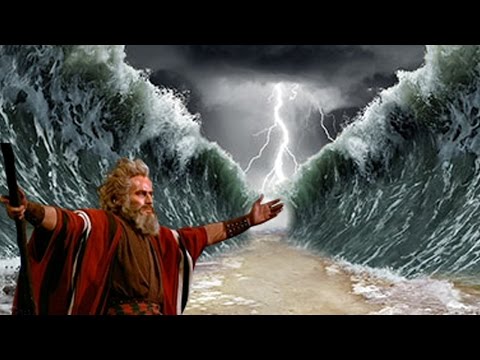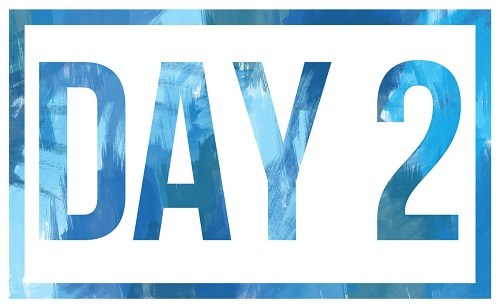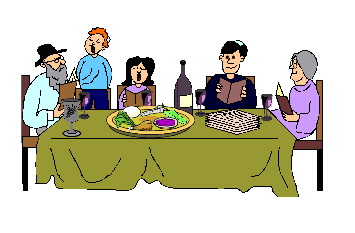As always, I ask myself what is the best use of my time (after I take away all of the time that I wasted… ☹). Should I blog? Should I write more or work more on translating my books? Should I learn more Torah? Should I answer more questions concerning topics that I have some knowledge in the hope that I can help someone come a bit closer to HKB”H? (Should I help my wife? Spend more time with my kids? Take out the trash…?) In any case, as has happened many times in the past my curiosity and hashgacha pratis (HaShem’s personal attention of me), and my excitement about the topics pertaining to emunah has – once again – gotten the better of me and led me to explore further into one of the topics that I touched upon in book 2 “G-d & Me”, the historicity (i.e. the correctness of the historical information) contained in the Torah and the TaNaCh.
One of the greatest controversies in the past century, but more specifically since the 1950s has been the historical verification of the information that the Torah writes in the books of Bereshis (Genesis) and Shemos (Exodus) concerning the time that the people of Israel spent in Egypt. We have been told for many, many years now that there is virtually no evidence for the stories related in the Torah, and as a result, many people have doubted the correctness of the information therein. I got put onto this from two different sources which “happened” (there is no happenstance in life, HaShem’s got it all figured out) to coincide, resulting in my being “set on fire” to investigate what is going on. One source was a question that was asked on Quora.com (it can be found here) as to whether or not there is any mention of Moses in the hieroglyphs of Egypt. Another was a question on a facebook page asking whether there is any historical verification for the Exodus and if not, how does that affect your observance of Passover (Pesach). Reading through all of the various answers, addresses and sources kind of blew my mind. It was beyond me that any thinking, rational person can come to the conclusion that Moses and the Exodus are a myth and they wouldn’t, as a result, just throw out the whole thing! After all, if this story is wrong; and virtually everything that we do and/or celebrate in the Torah is “in memory of our Exodus from Egypt” then it’s all just a lie! SO, why keep any of it?
This also flies in the face of one of the major emunah principals of the Torah: that the whole thing is 100% unabashed, refined truth, just as its Author is. Ve’lo davar reik hu michem (It is not an empty thing from you) (Devarim (Deuteronomy) ??? ), which our sages, ob”m tell us that if you feel that it is empty – that’s all on you (don’t blame HaShem for your shortcomings and misunderstandings of His Torah!)
As always, what I have discovered is that this case, the verification of the Exodus and Moshe, is no different than any other issue that I have explored and investigated before. Therefore, I will begin with two qualifying statements:
- There are no absolute proofs in history more than there are in the sciences. It’s all about what the evidence presented is as opposed to the interpretation/explanation that is made based off of said information/evidence.
- The correctness/truth of information is not a popularity contest, nor is it a republic, where we would follow the majority opinion. It doesn’t matter, therefore, what the popular opinion is (or was). If the better explanation is the minority opinion then it is the correct one.
We, the children of Avraham, Yitzchak and Ya’akov have lived with these precepts our entire lives, as we have always been in the minority.
The biggest problem, it turns out, is that historians, for a number of reasons (which may, or may not justify the conclusion) are of the opinion that the Exodus took place during the reign of Ramesses the 2nd, who ruled over Egypt during around the period of 1250 BCE (one of the worst dating systems ever! I only refer to it as this is the chronology that we used today. I will say this, it’s certainly NOT a Jewish invention.) The problem with this is twofold. First of all, during that period of time, there is no evidence of anything having to do with the Exodus story, nor the history of the Jews in Egypt preceding it. Also, this creates tremendous problems with the dating of all of the sites of Yehoshua’s (Joshua, not the J-guy of the Christians) conquest of the land of Canaan. Ergo: The Exodus story must be wrong.
However, this chronology is not based on the TaNaCh, or on Jewish Tradition. Towards that end, I would like to put forward the following (incredibly short) timeline that is.

According to Jewish tradition, there is no way that the Pharaoh of the Exodus was Ramesses II, as the reign of Ramesses II was from 1279-1213 BCE, whereas according to Our Tradition the exodus happened at least 30-40 years before the beginning of his reign. But that’s not all. There are two clear archeological findings from the time of Ramesses II wherein he describes his victory over the country of Israel. One is the Merneptah Stele, which mentions his victory over “Israel”, which would only happen if Israel was a nation to conquer at the time[1]. The other artifact, although there is a dispute as to its exact dating, is called the “Berlin Pedestal”, which predates the stele above, and also mentions “Israel” as a place that was conquered by Egypt[2]. As that is the case, it is impossible that Ramesses II was the Pharaoh of the Exodus!
There are other issues with dating as well. It is well known that the “years” of kings are the earliest form of dating. However, there are at least three problems that exist when trying to actually create a chronology of the time.
- A “year” by kings of old is not what we call a year.
As the Gemara, at the beginning of Tractate Rosh ha Shannah tells us that even a day at the end of a year or one day into the next year is considered a year in dating purposes. As a result if a king lived like a king for only a week, of which one day was before the “New Year” and the rest after it, then all documents written that mention his reign will speak of “the second year of his reign”, whereas in reality only a week has gone by.
- Not all succession is as clear as that which is spelled out in the Prophets.
Much of the information that is available today is piecemeal. Meaning, it is picked up from among the scraps of information available. The reality is that there is almost no complete history of any of the “kingdoms” or timelines. (More on this in a moment).
- Not all of the historians quoted, nor the scribes who wrote the information were as reliable as we would like to believe.
Much of the histories, whether we are talking about Josephus, whose works are still in circulation, or Manetho, the Egyptian priest who wrote up the ancient histories for his masters the Greeks (and whose works didn’t survive) actually lived during the periods described. It is quite possible that much of their information is either dead-wrong or incredibly imprecise. Either way, this messes with the data and the dating as a result.
Lastly, I am not a fan of virtually all “scientific” dating methods that measure “deep time” (as opposed to short half-life measurements, which are accurate). All of them are based on presuppositions, and all of them have glaring flaws in both the logic behind them (as the math will lie if the initial integers are fantasy) and also in the science, as there are both problems with chaos theory that doesn’t properly allow for the precise calculation of a “half-life” (as I discussed in book 1, chapter 9 at length) and due to the fact that the more time goes on, the more it becomes clear that there are other factors that affect the half-life of radioactive isotopes, which could severely affect the half-life theory. Solar activity is one suggested issue. But this is not our topic here.
This doesn’t, however, solve the issues that I opened with. All it does is give real reasons to reject the accepted “scientific/historical” opinion that it was Ramesses II who was the pharaoh of the Exodus. However, we are still left with the question that I opened with. Is there any evidence of the Exodus? This brings us to what I wrote about in book 2, “G-d & Me” and in book 1, concerning Genesis, that the really important issue is the patterns of information, not the dating that is proffered as if it is ineffable truth. Is there any data available that follows the patterns laid out in books of Bereshis (Genesis) and Shemos (Exodus)? Over the years, there has been much discussion on this topic, of which some proofs were good, whereas others were not. However, during the thought process that was going on in answering the questions from Quora and Facebook, I discovered the most amazing little documentary that went ahead and did the work for me. It’s called “Patterns of Evidence: Exodus” by Timothy Mahoney, and, in my opinion, it is brilliant. There is, indeed, a whole lot of evidence, both actual and circumstantial, that back up the Exodus story, and it does so “play for play.” The following is a lecture, available on youtube (if you can watch it) wherein much of the information that is in the documentary itself is presented by a well-known (if off-the-wall agnostic) Egyptologist, David Rohl.
The documentary itself ends by mentioning that although the opinion presented is not the mainstream opinion and that it should be respected, however, it’s is impossible, at the same time, to ignore the evidence laid out in the film, and that there is room to “play with” the established timeline to the extent that the evidence and the dating fit “hand-in-glove”. I am assuming that, in order to not be controversial, didn’t make some of the claims that I brought earlier (carbon-dating), and it’s possible that the chronological issue of kings was not known to him. However, what seems clear is that the mainstream, although comprised of very intelligent people, is going to fight the opinions of Rohl and of Mahoney for two reasons:
- Because the amount of work that would be necessitated by reevaluating the dates would comprise a total overhaul of the works of the past 100 years. By this, I mean not only those pertaining to Egypt, but also the histories of most of the nations that were alive during the reign of Egypt as well, as much of their histories are substantiated from Egypt’s. Relegating it all, for all practical purposes to the garbage bin. And, more importantly;
- Because this would mean that they are wrong and that the Torah is correct, which would require the swallowing of massive egos, which, for most people, is an impossible task.
I, myself, am still working on the humility part. Moses, our great teacher, is the only one concerning whom the Torah says that he was “the humblest of men.” I would, and shall continue to trust the word of the humblest of men over that of hundreds, thousands, or even millions of scholars who think that they are smarter than G-d’s own word.
As always, Torah 1, historians/scientists
0.
[1] https://en.wikipedia.org/wiki/Merneptah_Stele#%22Israel%22
[2] https://watchjerusalem.co.il/515-berlin-pedestal-earliest-mention-of-israel





You must be logged in to post a comment.